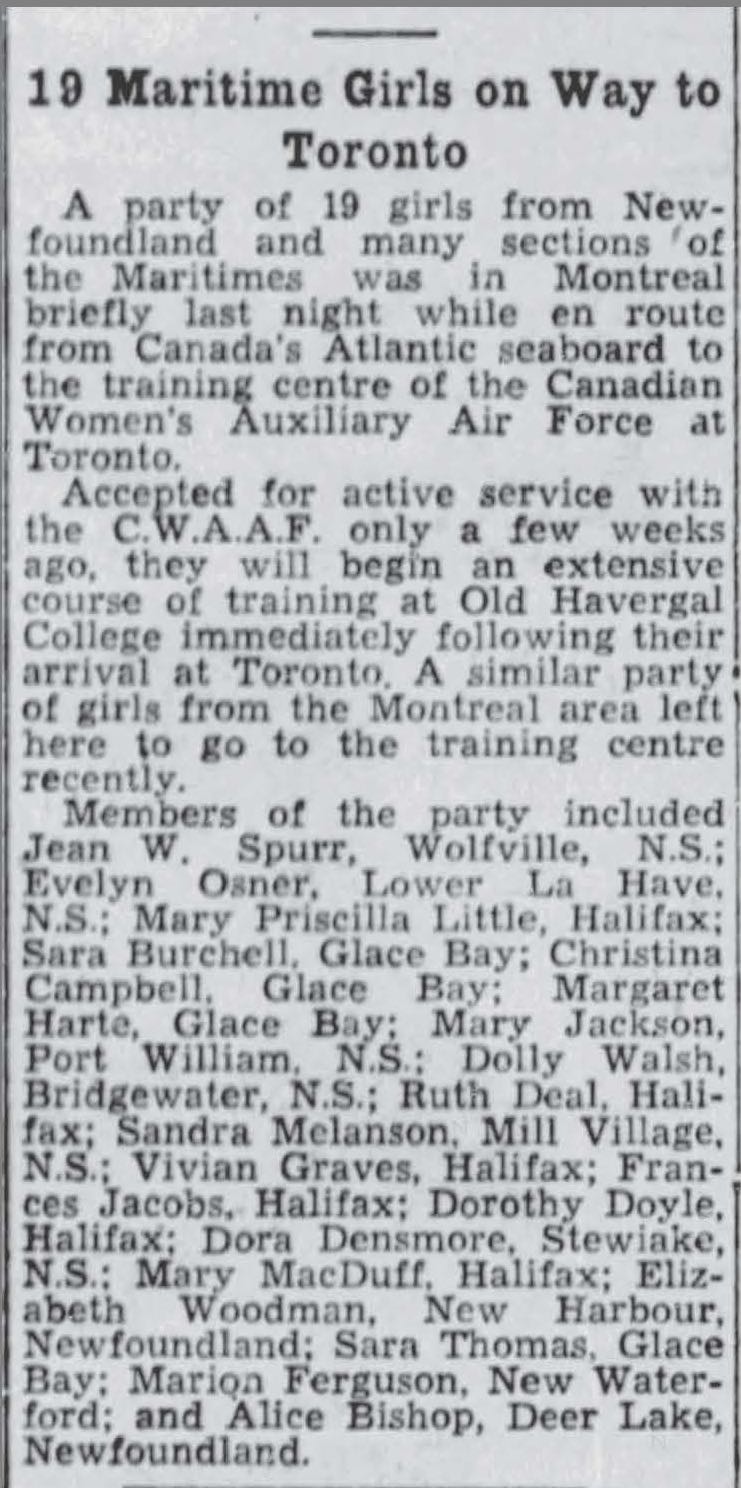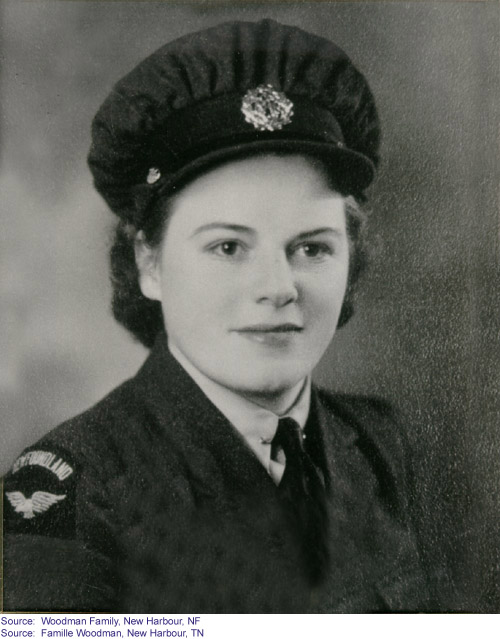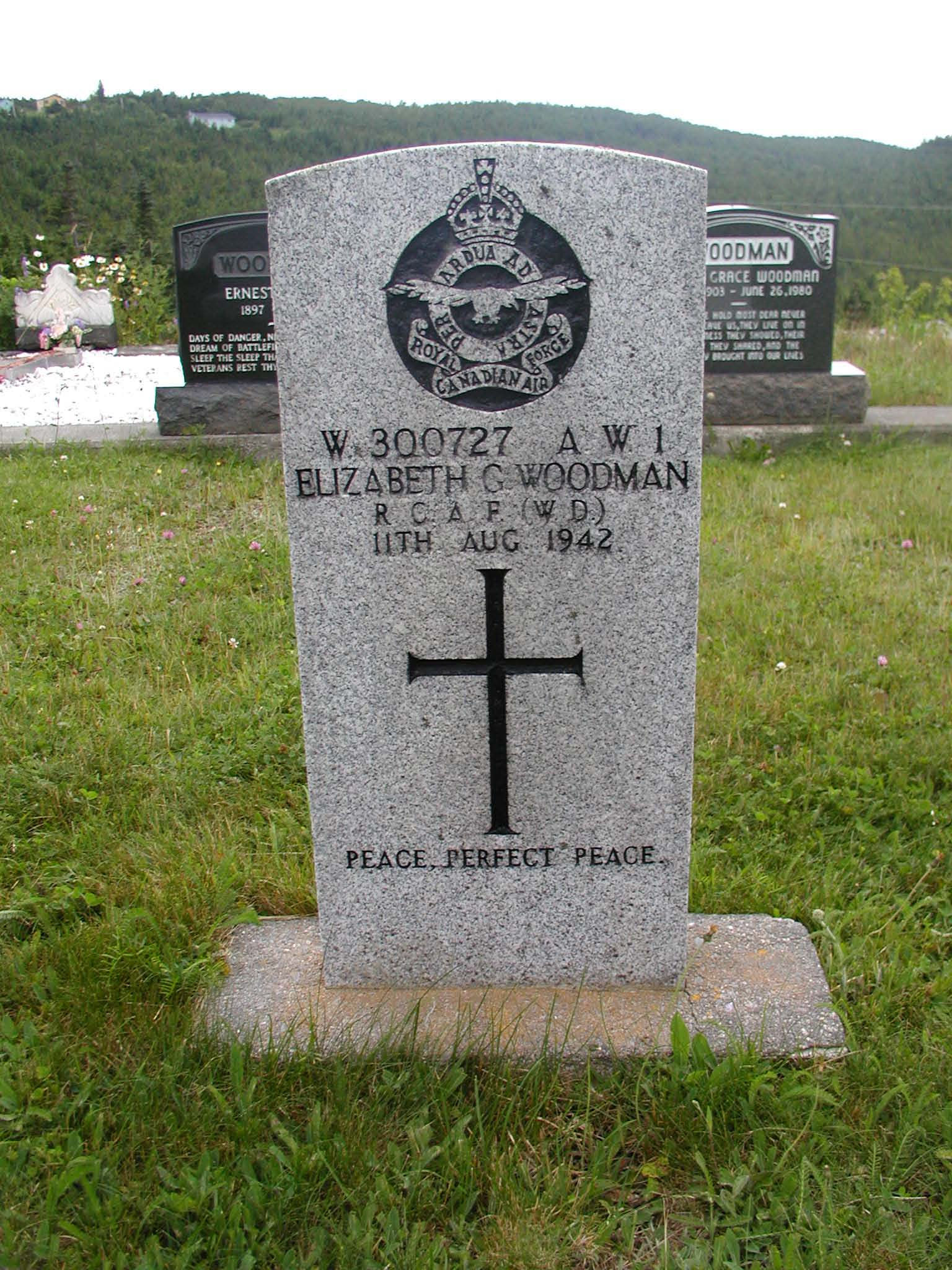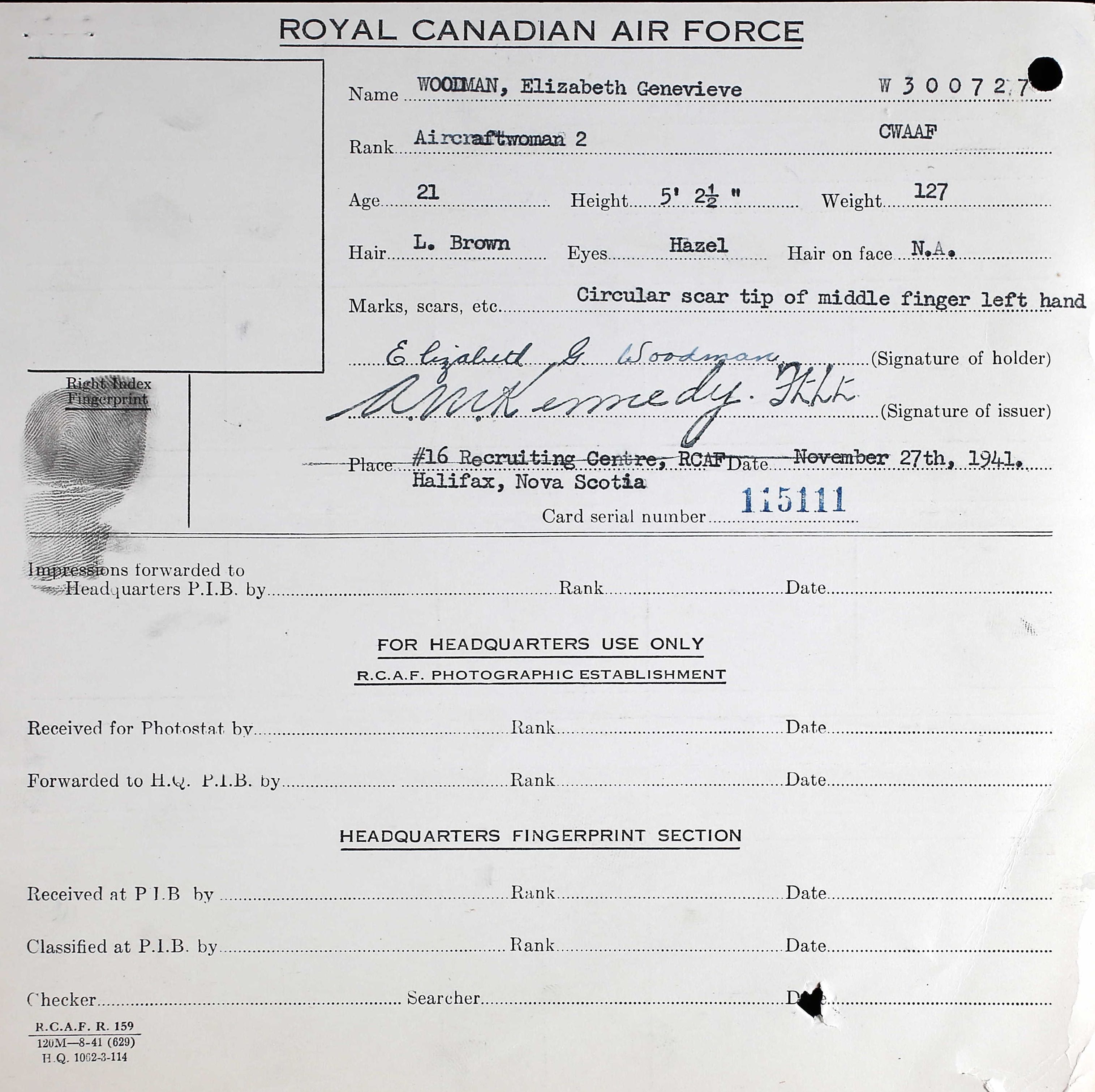



February 23, 1920 - August 11, 1942




Elizabeth Genevieve Woodman was the daughter of George and Mary Louise Woodman of New Harbour, Newfoundland. Mr. Woodman was a 'general dealer/merchant/clerk.' Elizabeth had two brothers, Ford and Neal and four sisters, Patricia, Elaine, Eileen, and Grace. The family was Anglican.
Elizabeth attended New Harbour School from 1926-1937. She studied English literature, history, arithmatic, algebra, geometry, French, economics, English language and botany in Grade XI.
In 1940-1941, Elizabeth taught school. She also had been a store clerk.
When she enlisted with the CWAAF in Halifax, Nova Scotia on November 27, 1941, Elizabeth felt she was qualified to be an equipment assistant, as she had experience in handling goods, stock taking and simple bookkeeping. "Good type and good general appearance." She was taken on strength as an equipment assistant, although she had requested to be a motor transport driver as another option.
She stood 5' 1 1/2" tall, weighed 127 pounds, had light brown hair and hazel eyes, with a scar on the medial aspect of middle finger, left hand. She liked to skate, swim, play basketball and field hockey.
TRAINING AND POSTINGS:
On one evaluation: "10 out of 16 students. 64% Hard working student. Very attentive."
On January 8, 1942 at No. 6 M Depot, Toronto, she fell from the upper bunk. "I have constant pain in the small of my back which is aggravated by standing and moving about, even in bed. I cannot bend my back in any direction without experiencing severe pain," she said. In the medical report: Elizabeth "had landed on her back with her feet and knees drawn up and her back arched. She got herself up off the floor by herself and lay back down on the bed. She slept fairly well, being awakened by rolling over. Back was not very sore the next day and she carried on with full duties and did not report it to the M.O. Was transferred to No. 8 SFTS, Moncton, arriving January 25, 1942."
On May 4, 1942, AW1 Woodward reported to the Medical Officer and her back was examined. She was able to perform all her duties, with a minimum of limitation and discomfort. The MO felt she was suffering from strain. Heat and massage were given. "On May 26, 1942, the patient returned to Sick Quarters again and was re-examined. She could bend and touch her toes easily. She was able to extend well...some tenderness was elicated along the right side of the lumbar spine and seemed entirely muscular. Heat and massage were again given and patient returned to work."
On June 22, 1942, Elizbeth returned to the MO, "complaining that her back was getting worse. She was suffering intense pain and unable to do the work and to bend or twist." A medical examination took place. "Respiratory: the chest is somewhat asymmetrical, a definite change from last time the patient was seen. The right chest is flattened anteriorly and bulged posterirly. The left chest is bulged anteriorly and flatterned posteriorly. The lung fields are negative." The report continued. "Back: there is an obvious socliosis with primary curve convex left in lumbar region and the compensatory curve convex to the right on the dorsal region. There is twisting of the thoracic cage. The spines of 2nd, 3rd, and 4th lumbar vertebrae are quite prominent and tenderness is elicited in this region on deep pressure. The surrounding muscles are tender and spastic. All movements are extremely bunted. Diagnosis: Scoliosis (traumatic). This patient is to have whole spine and sacro-iliac region x-rayed." On June 24: X-ray: "There is a crushing fracture of the first lumbar vertebra, with fracture of the lateral process and displacement towards the right side." The next day: "Patient not complaining severely and is about the same. Back strapped with adhesive pending removal to Montreal." On June 26: "Back much more comfortable since being strapped but still painful. Is to be transferred to Montreal today."
Probable duration of injury: Six to nine months, hyperextension and plaster, treatment in hospital or convelenscent home likely to be beneficial. "This airwoman be brought before a board of Medical Officers for categorization and recommendations."
On July 9, 1942, Elizabeth had surgery. "Exploratory laminectomy, spinal fusion, with parallel bone grafts. Dr. Cone and Dr. Turner. The laminae of L1 was completely removed and L2 partially removed....as much tissue as possible was removed and a curette was used. Bone grafts were placed in a parallel manner from T11 to L3 inclusively. It is unfortunate that the nature of the lesion was not recognized before the operation. It seems inevitable that tuberculosis meningitis will result -- also a tuberculosis infection of the wound is extremely likely.
On July 20, 1942, AW1 Woodman was discharged "in consequence of Para. 392 (10) (a) Medically unfit for any form of Air Force Service." This was confirmed at No. 5 Manning Depot, Lachine, Quebec.
Dr. Shaver, Neurological Intern reported: "Following the operation, the patient developed clinical evidence of tuberculosis meningitis with increasing number of lymphs, and polyps in the spinal fluid. Repeated cultures of the CSF failed to reveal organisms, however, prior to death, the patient showed evidence of vascular occlusions, involving the nervous system, probably due to periarteritis in localized field."
On August 11, 1942, Elizabeth Genevieve Woodman died in Montreal. The Canadian Pension Commission stated: "In the opinion of the Commission, death from tuberculosis meningitis was the result of a pre-enlistment condition, aggravated during service in Canada, subsequent to May 21, 1940, but not pensionable as the aggravation did not arise out of, nor was it directly connected with, military service."
Elizabeth's body was transported back to Newfoundland and she was buried at the St. Augustine Cemetery, New Harbour, Newfoundland.
LINKS: